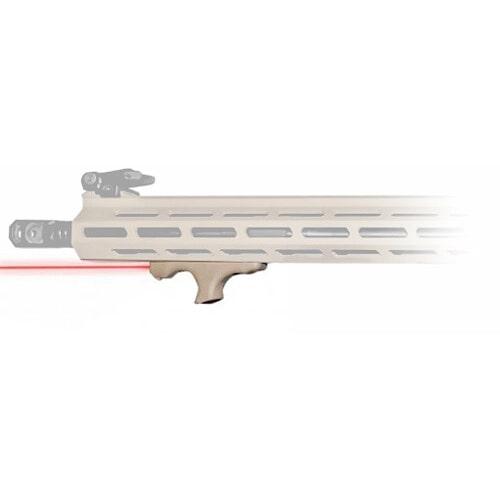

The Viridian HS1 Red Laser FDE with Picatinny Adapter is a game-changer for tactical firearms. This innovative accessory combines a hand stop with an integrated laser sighting device, providing shooters with a unique advantage. Whether you prefer a traditional grip or something more dynamic, the HS1’s pressure-activated buttons ensure that your laser is always within reach when you need it most. It's not just about aiming; it’s about precision shooting at its finest.
Designed specifically for AR-style firearms, the HS1 offers an ergonomic feel along with adjustable windage and elevation. This means you can fine-tune your laser sight for optimal accuracy, making it an essential addition to your arsenal. With a highly visible red laser, you can confidently engage targets under various conditions, enhancing your tactical performance.
Features:
- INTEGRATED LASER SIGHT for precise aiming in low-light conditions.
- ERGONOMIC DESIGN ensures comfort during extended use.
- GRIP ACTIVATION allows for quick and intuitive operation.
- ADJUSTABLE WINDAGE & ELEVATION facilitates fine-tuning of laser alignment.
- PICATINNY ADAPTER for easy and secure mounting on your firearm.
- IMPACT-RESISTANT construction to withstand tough environments.
- HIGHLY VISIBLE RED LASER enhances target acquisition.
- VERSATILE COMPATIBILITY fits various AR-style firearms seamlessly.
Technical Specifications Table
| Specification | Details |
|---|---|
| Weight | 5.5 oz |
| Dimensions | 4.5" x 2.5" x 1.5" |
| Laser Color | Red |
| Material | Aluminum |
What’s in the Box?
- Viridian HS1 Red Laser FDE
- Picatinny Adapter
- User Manual
Customer Reviews
"The HS1 is a must-have! It’s easy to mount and super effective." - John D.
"I love the ergonomic design and how quickly the laser activates!" - Sarah K.
FAQ
How does the HS1 compare to traditional laser sights?
The HS1 integrates a hand stop with a laser sight, offering a dual function that maximizes space and efficiency on your firearm.
Can I use this laser in bright sunlight?
Yes, the HS1’s red laser is designed to be highly visible, even in bright conditions, ensuring you can always acquire your target.
Similar Models
If you're interested in enhancing your tactical setup, explore our range of Viridian optics, including the Viridian C5 Laser Sight and the Viridian X5L Green Laser. Each product is crafted for superior performance and precision to elevate your shooting experience. Discover the full collection today!
You May Also Like
Here’s some of our most similar products people are buying. Click to discover trending style.






